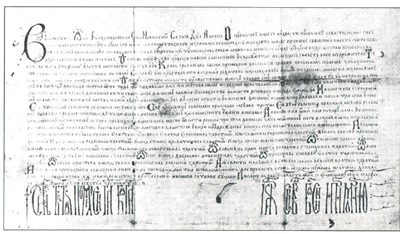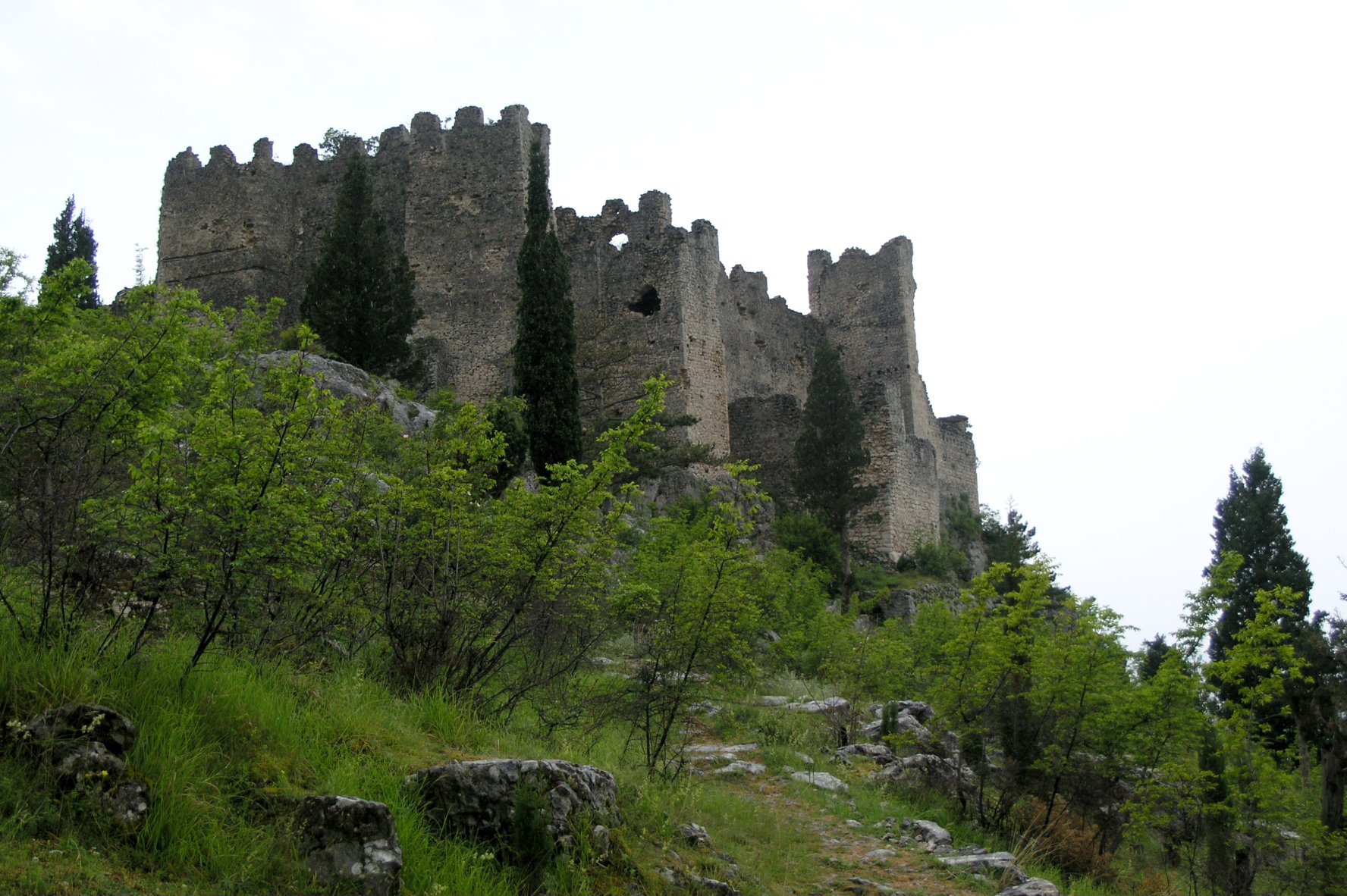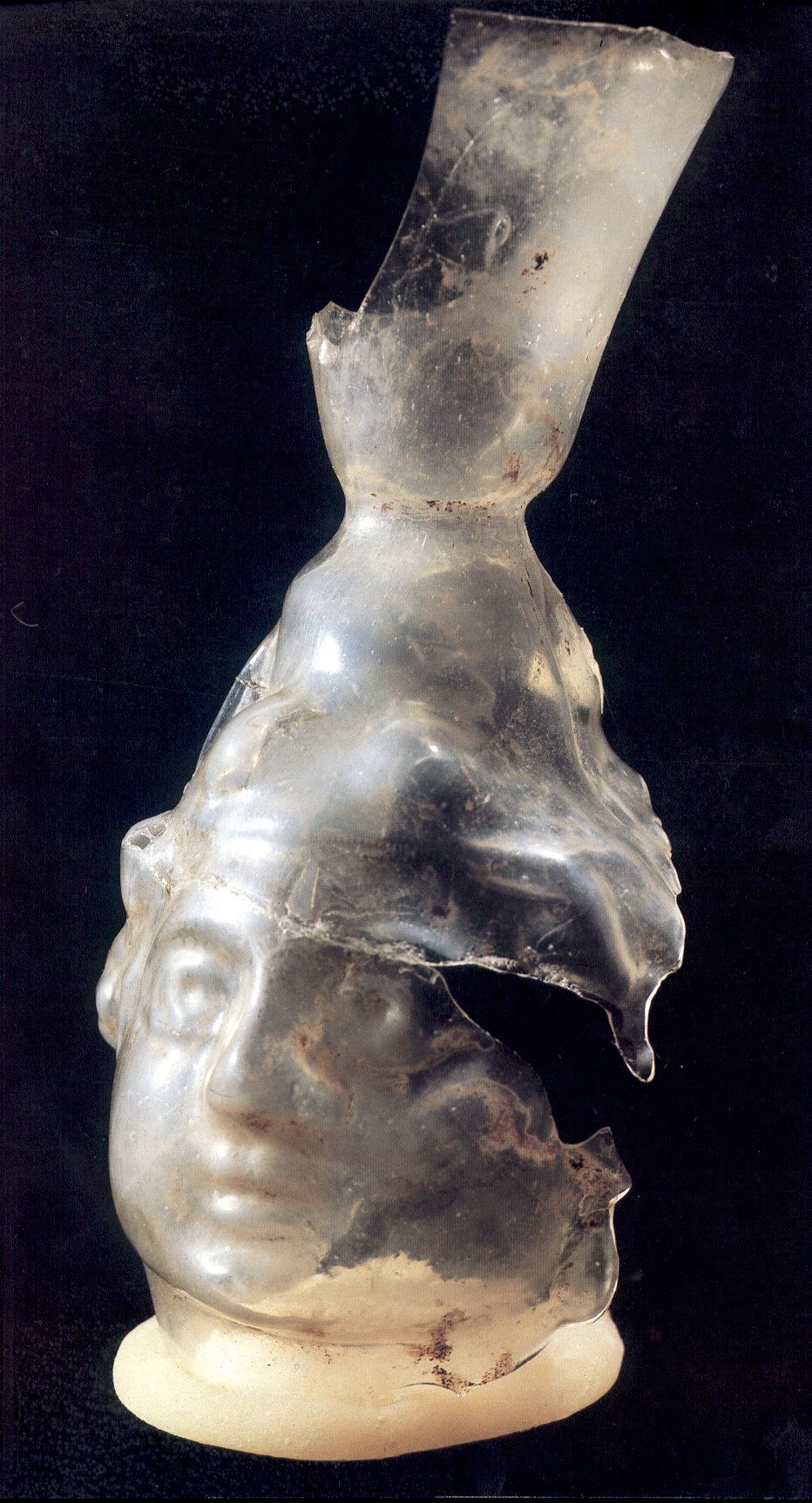|
Old Town Of Visoki
The Old town of Visoki ( sh-Latn-Cyrl, Stari grad Visoki, Стари град Високи, ) was a medieval royal castle town built during the 14th century on the top of the hill overlooking town of Visoko, Bosnia and Herzegovina. The first mention of the town was on 1 September 1355, in the charter "''in castro nosto Visoka vocatum''" written by Tvrtko I of Bosnia while he was a young ban. The town was presumably abandoned before 1503, as it is not mentioned in the Turkish-Hungarian treaty from the mentioned year. In 1626, Đorđić mentioned Visoki among abandoned towns. Location and size The Old Town of Visoki is at the top of Visočica hill, high. Its position provides an excellent view at the plains below. The entry to the castle is on the southwest side, with two lookout towers. Passing through the entry you enter a part that is called ''Podvisoki'', which was quite small, measuring and has signs and remains of early medieval houses. The thickness of the castle town w ... [...More Info...] [...Related Items...] OR: [Wikipedia] [Google] [Baidu] |
Visoko, Bosnia And Herzegovina
Visoko ( sr-cyrl, Високо, ) is a city located in the Zenica-Doboj Canton of the Federation of Bosnia and Herzegovina, an entity of Bosnia and Herzegovina. As of 2013, the municipality had a population of 39,938 inhabitants with 11,205 living in Visoko town. Located between Zenica and Sarajevo, Visoko lies where the river Fojnica joins the Bosna. The Visoko region has evidence of long continuous occupation, with the first traces of life dating back to the 5th millennium BC. Archaeological excavations of Okolište have found one of the biggest neolithic settlements of the Butmir culture in southeastern Europe. It was an early political and commercial center of the Bosnian medieval state, and the site where the first Bosnian king Tvrtko I was crowned. The Old town Visoki, located on Visočica hill, was a politically important fortress, and its inner bailey Podvisoki was an early example of a Bosnian medieval urban area.Pavao Anđelić, Srednji vijek – Doba stare bosa ... [...More Info...] [...Related Items...] OR: [Wikipedia] [Google] [Baidu] |
Zvijezda (mountain)
Zvijezda (Serbian Cyrillic: Звијезда) is a mountain on the border of Serbia and Bosnia and Herzegovina, between towns of Bajina Bašta and Višegrad. Its highest peak ''Veliki Stolac'' lies on Bosnian territory and has an elevation of 1,673 meters above sea level, followed by ''Kozji rid'' (1591m), ''Pivnice'' (1575m), ''Mrka kosa'' (1545m), and ''Lisnata glavica'' (1510m), on Serbian side. Zvijezda lies in a large bend of the Drina river, and presents a western extension of the Tara mountain. Serbian parts of the mountain belong to the Tara National Park. A football club from neighbouring town of Višegrad Višegrad ( sr-cyrl, Вишеград, ) is a town and municipality located in eastern Republika Srpska, an entity of Bosnia and Herzegovina. It rests at the confluence of the Drina and the Rzav river. As of 2013, it has a population of 10,668 ... bears its name, FK Zvijezda. References Mountains of Bosnia and Herzegovina Mountains of Serbia {{B ... [...More Info...] [...Related Items...] OR: [Wikipedia] [Google] [Baidu] |
National Monuments Of Bosnia And Herzegovina
National may refer to: Common uses * Nation or country ** Nationality – a ''national'' is a person who is subject to a nation, regardless of whether the person has full rights as a citizen Places in the United States * National, Maryland, census-designated place * National, Nevada, ghost town * National, Utah, ghost town * National, West Virginia, unincorporated community Commerce * National (brand), a brand name of electronic goods from Panasonic * National Benzole (or simply known as National), former petrol station chain in the UK, merged with BP * National Car Rental, an American rental car company * National Energy Systems, a former name of Eco Marine Power * National Entertainment Commission, a former name of the Media Rating Council * National Motor Vehicle Company, Indianapolis, Indiana, USA 1900-1924 * National Supermarkets, a defunct American grocery store chain * National String Instrument Corporation, a guitar company formed to manufacture the first resonator g ... [...More Info...] [...Related Items...] OR: [Wikipedia] [Google] [Baidu] |
Castles In Bosnia And Herzegovina
This is a list of fortifications in Bosnia and Herzegovina, including fortresses and castles, arranged alphabetically. List The list is based on body of work in Bosnia and Herzegovina historiography. }) is an old fort overlooking the historic core of Sarajevo. It is a national monument of Bosnia and Herzegovina. , , - , Blagaj , Mostar , , , , , - , Bobovac , Vareš/Kraljeva Sutjeska , , , , , - , Bočac Fortress , Bočac , , , , , - , Borač Castle , Brčigovo , Fortified town with noble court , 1244 (13th century) , Borač was noble court of Radinović-Pavlović and one of the largest and most important fortified towns of medieval Bosnia , , - , Bosanska Krupa Fortress , Bosanska Krupa , , , , , - , Bužim Castle , Bužim , , , , , - , Branković Tower , Trebinje , , , , , - , Captain's Citadel , Bihać , , , , , - , Citadel Počitelj , Počitelj , , 1383 , , , - , Medieval Town of Dubrovnik (Bosnia and H ... [...More Info...] [...Related Items...] OR: [Wikipedia] [Google] [Baidu] |
Buildings And Structures In Visoko
A building, or edifice, is an enclosed structure with a roof and walls standing more or less permanently in one place, such as a house or factory (although there's also portable buildings). Buildings come in a variety of sizes, shapes, and functions, and have been adapted throughout history for a wide number of factors, from building materials available, to weather conditions, land prices, ground conditions, specific uses, prestige, and aesthetic reasons. To better understand the term ''building'' compare the list of nonbuilding structures. Buildings serve several societal needs – primarily as shelter from weather, security, living space, privacy, to store belongings, and to comfortably live and work. A building as a shelter represents a physical division of the human habitat (a place of comfort and safety) and the ''outside'' (a place that at times may be harsh and harmful). Ever since the first cave paintings, buildings have also become objects or canvasses of much artistic ... [...More Info...] [...Related Items...] OR: [Wikipedia] [Google] [Baidu] |
History Of Visoko
Visoko ( sr-cyrl, Високо, ) is a city located in the Zenica-Doboj Canton of the Federation of Bosnia and Herzegovina, an entity of Bosnia and Herzegovina. As of 2013, the municipality had a population of 39,938 inhabitants with 11,205 living in Visoko town. Located between Zenica and Sarajevo, Visoko lies where the river Fojnička River, Fojnica joins the Bosna (river), Bosna. The Visoko region has evidence of long continuous occupation, with the first traces of life dating back to the 5th millennium BC. Neolithic site Okolište, Archaeological excavations of Okolište have found one of the biggest neolithic settlements of the Butmir culture in southeastern Europe. It was an Visoko during the Middle Ages, early political and commercial center of the Bosnian medieval state, and Mile (Visoko), the site where the first Bosnian king Tvrtko I was crowned. The Old town of Visoki, Old town Visoki, located on Visočica hill, was a politically important fortress, and its inner bail ... [...More Info...] [...Related Items...] OR: [Wikipedia] [Google] [Baidu] |
History Of Bosnia And Herzegovina
Bosnia and Herzegovina, sometimes referred to simply as Bosnia, is a country in Southeast Europe on the Balkan Peninsula. It has had permanent settlement since the Neolithic Age. By the early historical period it was inhabited by Illyrians and Celts. Christianity arrived in the 1st century, and by the 4th century the area became part of the Western Roman Empire. Germanic tribes invaded soon after, followed by Slavs in the 6th Century. In 1136, Béla II of Hungary invaded Bosnia and created the title "Ban of Bosnia" as an honorary title for his son Ladislaus II of Hungary. During this time, Bosnia became virtually autonomous, and was eventually proclaimed a kingdom in 1377. The Ottoman Empire followed in 1463 and lasted over 400 years. They wrought great changes to the political and administrative system, introduced land reforms, and class and religious distinctions. A series of uprisings began in 1831, which culminated in the Herzegovinian rebellion, a widespread peasant uprising ... [...More Info...] [...Related Items...] OR: [Wikipedia] [Google] [Baidu] |
Visoko During The Middle Ages
The area of today's Visoko is considered to be a nucleus from where Bosnian statehood was developed in 10th century. The expanded valley of the river Bosna around today's Visoko was the biggest agriculture area in central Bosnia, so fertile ground around Visoko was ideal for development of early political center of Bosnian nobility. The settlement that was in Visoko field has been associated with name Bosnia for a long time, only since the 1350s has the name Visoki became widely used. Visoko and its valley with Mile, Moštre, Podvisoki was an early center of the Bosnian medieval state, and the site where the first Bosnian King Tvrtko I was crowned. The old town of Visoki, located on Visočica hill, was a politically important fortress, and its inner bailey, Podvisoki, was an early example of a Bosnian medieval urban area.Pavao Anđelić, Srednji vijek – Doba stare bosanske države, "Visoko i okolina kroz historiju I, Visoko 1984, 160–162 History Medieval settlement Bos ... [...More Info...] [...Related Items...] OR: [Wikipedia] [Google] [Baidu] |
Tvrtko Borovinić
Tvrtko may refer to: * Tvrtko I of Bosnia, medieval king of Bosnia * Tvrtko II of Bosnia, medieval king of Bosnia * Tvrtko Jakovina, Croatian historian * Tvrtko Kale Tvrtko Kale (now Dreshler Kale, he, טברטקו קאלה; born 5 June 1974) is a retired Croatian-Israeli footballer who played as of July 2015 for Maccabi Kiryat Gat. The newspaper ''Slobodna Dalmacija'' rated him the best player in the Croat ... (born 1974), Croatian-Israeli footballer See also * Tvrtko of Bosnia (other) * Tvrtko Kotromanić (other) * Stephen Kotromanić (other) * Prijezda Kotromanić (other) {{dab, hndis, given name Croatian masculine given names ... [...More Info...] [...Related Items...] OR: [Wikipedia] [Google] [Baidu] |
Batić Mirković
Batić Mirković ( sr-cyr, Батић Мирковић) was a prominent 15th century Bosnian nobleman and magnate. His father was Bosnian knyaz, Mirko Radojević, the Radojević-Mirković family senior, who had a brother Radič Radojević. Batić succeeded as a head of the family and Bosnian knyaz after his father death, while he also succeeded Radoje Radosalić-Pribinić of his grandfather, as Grand Knyaz of Bosnia. He was married to Vukava. Knyaz Batić Mirković can be traced in three places in diplomatic material, on charters as a witness in the period 1405-1420. In June 1405, in Bijela Selišta in Trstivnica, the Bosnian king Tvrtko II Tvrtković issued a charter to the people of Dubrovnik confirming cession of the Slano littoral, and among the witnesses to this act (with the elected nobleman and nobles of the Bosnian Rusag) was Knyaz Batić Mirković. This could mean that his father dead and that he has taken his place. His next mention is from the beginning of Mar ... [...More Info...] [...Related Items...] OR: [Wikipedia] [Google] [Baidu] |
Stjepan Ostoja
Stephen OstojaHis name in Bosnian is rendered Stjepan Ostoja (), while in Croatian it's Stjepan Ostoja. In Serbian, he is called Stefan Ostoja (). ( sh-Latn-Cyrl, separator=" / ", Stjepan Ostoja, Стјепан Остоја; died September 1418) was King of Bosnia from 1398 to 1404 and from 1409 to 1418. Family connections He was a member of the House of Kotromanić, most likely son of Vladislaus and brother of King Stephen Tvrtko I. When duke Hrvoje Vukčić in 1416 died, King Ostoja divorced his old wife Kujava from the house of Radenović and married Hrvoje's widow Jelena Nelipčić the next year.John Van Antwerp Fine, Bosnian Institute; ''The Bosnian Church: Its Place in State and Society from the Thirteenth to the Fifteenth Century'', Saqi in association with The Bosnian Institute, 2007 Jelena Nelipčić was the sister of Prince Ivan III Nelipac from the Croatian noble Nelipić (Nelipac) family. That way Ostoja inherited most of Hrvoje's lands. Rise to power Ostoja was ... [...More Info...] [...Related Items...] OR: [Wikipedia] [Google] [Baidu] |
Republic Of Ragusa
hr, Sloboda se ne prodaje za sve zlato svijeta it, La libertà non si vende nemmeno per tutto l'oro del mondo"Liberty is not sold for all the gold in the world" , population_estimate = 90 000 in the XVI Century , currency = Ragusa perpera and others , common_languages = , title_leader = Rector as Head of state , leader1 = Nikša Sorgo , year_leader1 = 1358 , leader2 = Sabo Giorgi , year_leader2 = 1807-1808 , today = Croatia Bosnia and Herzegovina Montenegro , footnotes = A Romance language similar to both Italian and Romanian. While present in the region even before the establishment of the Republic, Croatian, also referred to as ''Slavic'' or ''Illyrian'' at the time, had not become widely spoken until late 15th century. The Republic of Ragusa ( dlm, Republica de Ragusa; la, Respublica Ragusina; it, Repubblica di Ragusa; hr, Dubrovačka Republika ... [...More Info...] [...Related Items...] OR: [Wikipedia] [Google] [Baidu] |






.jpg)